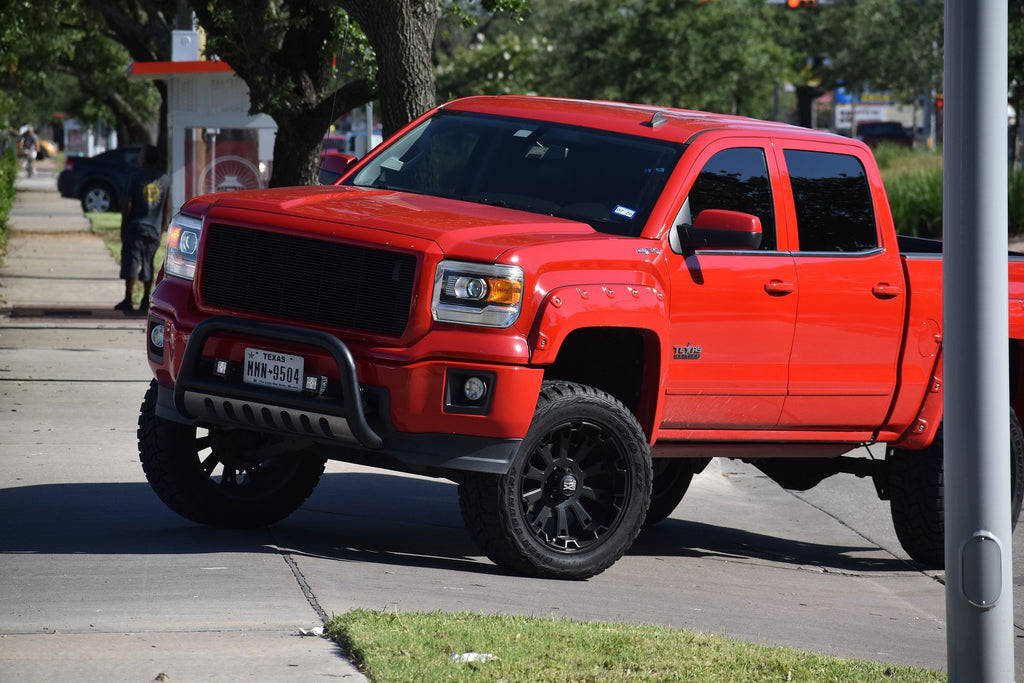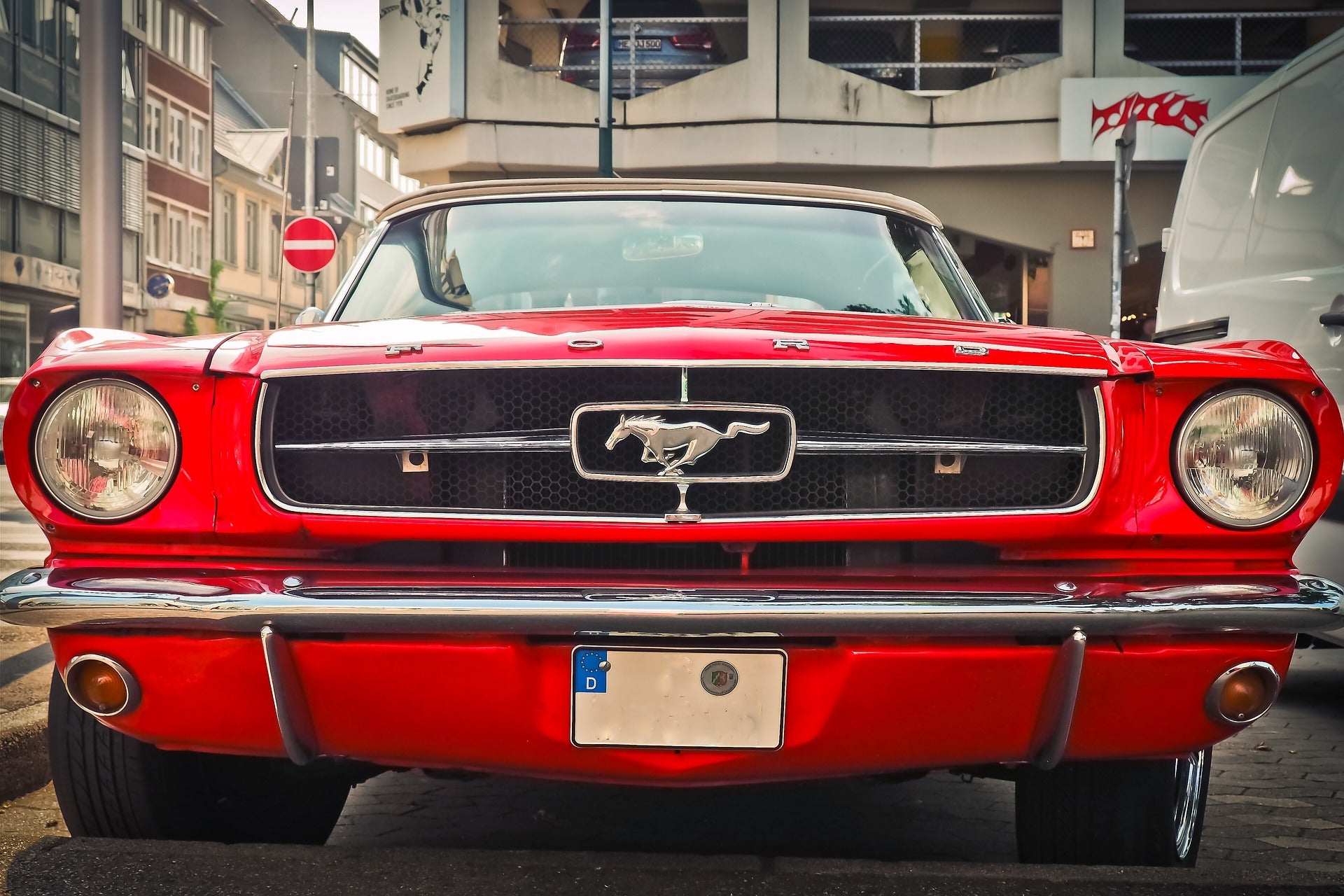When did cars start using hydraulic brakes?: A Brief History of Power Brakes
The idea and initial plans for a four-wheel brake system using hydraulics were introduced by Malcolm Loughead (pronounced Lockheed) in 1918. This groundbreaking braking system used fluid that was a mixture of water and glycerin to reduce the pressure that needed to be applied by the operator. It did this by transferring force to the brake components (brake shoes) at the wheels when pressure was applied to the brake pedal.

The Model A Duesenberg was the first car to have hydraulic brakes in 1921. By the late 1920s, this state-of-the-art and fully superior braking system were adopted by nearly every motor company. “Nearly”, you say? Yes! Ford held out on the upgrade for roughly 10 more years until 1939 but finally folded under the pressure of their competition having an edge with the new hydraulic braking system.
Here’s Difference Between DOT3 and DOT4 Brake Fluid
Currently, brake fluid is still not all that well understood but isn’t really that complicated. The systems have of course evolved over the years making them more reliable and adding components to give them even more power, like brake boosters and upgraded stainless steel brake lines. We all know our cars need power brakes, but that doesn’t mean we have a grasp on what brake fluid is made of, or what the DOT ratings mean. Some people don’t know that there are different ratings for brake fluid and that they can affect how your vehicle performs. So, what is the difference between DOT3 and DOT4?
Disclaimer:You should never go against your manufacturer’s recommended brake fluid. Your owner's manual will tell you whether you should use DOT3 or DOT4 brake fluid in your car or truck. Using the incorrect brake fluid could cause issues with your braking performance.
How Does Brake Fluid Work?

Before we start explaining the difference between DOT3 and DOT4 brake fluid, you need a basic understanding of what brake fluid does. This will give you an idea of how the different ratings impact your brake system performance. The amount of pressure placed on the pedal directly affects the pressure at the brake calipers. Simply put, the harder you hit the brake pedal, the faster your car stops. Without brake fluid, you won’t be able to stop.
Does Brake Fluid Break Down?
Yes, brake fluid can “go bad” and break down over time. It can also absorb water which leads to further breakdown and complications while braking. You should change your brake fluid about every 2 years or 30,000 miles, whichever comes first. This schedule should take care of issues with chemical brake down and moisture in the braking system. Bad brake fluid can cause your brake system to malfunction, which is very dangerous for you, your passengers, other motorists, and pedestrians. Maintaining your entire brake fluid system is paramount for safe driving practices.
Why is Moisture So Bad for the Braking System?

Brake fluid has a very high boiling point and isn’t likely to reach its boiling point by the friction caused while braking. Water boils at 212°F or 100°C and will boil easily at the temperatures produced during braking. When moisture in your brake line boils it evaporates and becomes a gas. This gas in your braking system is very dangerous because if it is compressed instead of the brake fluid, your brake will go to the floor and your vehicle will not stop. Therefore you should change and flush your brake fluid every 2 years or 30k miles.
The ratings we are discussing are based on two categories: the dry boiling point and the wet boiling point. The dry boiling point is the boiling point for fluid that hasn’t absorbed water or other pollutants. The wet boiling point is the boiling point for brake fluid that has absorbed water or other contaminants. The DOT stands for The Department of Transportation, which is the group that defines the ratings.
Typically, when comparing DOT3 vs. DOT4, DOT3 brake fluid has a dry boiling point of 401 degrees Fahrenheit, and a wet boiling point of 284 degrees Fahrenheit. However, there is no standard formula for brake fluid boiling points, so this is an estimated boiling point. The exact boiling points may vary. Your standard DOT3 fluids do exceed these values. DOT3 fluid typically includes an 80% glycol ether base which is one of the factors that contribute to water absorption.

DOT4 brake fluids do have higher dry boiling points and wet boiling points. Higher boiling points are required in brake systems that produce more heat due to faster speeds, heavier towing loads, etc. DOT4 fluid typically has 50 to 65% glycol ether base with 20-30 % Borate Ester which helps resist the boiling of the fluid, meaning you have 3.7% moisture in your DOT3 fluid the fluid will boil at roughly 290°F. With DOT4 your brake system will absorb moisture faster than DOT3 brake fluids and should be changed more regularly.
When examining DOT3 vs. DOT4 brake fluid, the boiling point and lifespan are the most notable distinctions between the types. You’ll have to replace DOT4 more often than DOT3 brake fluid.
Are There Other Brake Fluids with DOT Ratings?
Yes, there are. You may find DOT5 and DOT5.1 brake fluid ratings out there, though they are far less common. DOT5 is silicone based and not compatible with ABS brakes or anything that currently has DOT3 or DOT4 in them. DOT5.1 was designed with less than 70% silicone, which allows it to be more compatible with other braking systems than DOT5. DOT5.1 Brake Fluid is 20-30% Glycol Ether based with 50-70% borate ester and is compatible with DOT3 or DOT4 Brake Fluid. Now I say that, to say this again…
You should ALWAYS use brake fluid that is the same rating that your vehicle’s manufacturer recommends in the owner’s manual. You can also check what kind of fluid your car takes by looking up the standards through manufacturer websites.
A Brief Summary of DOT3 vs DOT4: The Showdown

There is no real formula or recipe that goes into producing brake fluid so each type of brake fluid may contain different compounds or chemicals. There really are just a few differences that separate DOT3 and DOT4 brake fluids from each other.
The Big Differences Between DOT3 and DOT4 Brake Fluids
DOT3 brake fluid absorbs less water from the air than DOT4. This means you don’t have to change DOT3 brake fluid as often as you should change DOT4.
DOT4 brake fluid has higher boiling points for both dry and wet temperatures. This makes DOT4 the clear choice for higher-performance vehicles producing higher speeds, pulling heavier loads, etc.
Ultimately, the difference between DOT3 and DOT4 brake fluid lies in their ability to handle heat and water absorption. When you need your brake fluid changed, you should consult your owner’s manual to see what type of brake fluid your car recommends. You should not mix different types of brake fluid, as this can cause your brakes to malfunction due to incompatibility.
What About New Brake Lines?
New brake lines for cars and trucks are not a luxury. Over time, these components corrode, rust, and start to leak brake fluid. This becomes a safety issue for obvious reasons. No brake fluid, no brakes. Replacing these lines used to be a real pain because you had to bend them to fit your vehicle or pay a mechanic a crazy amount of money to run new brake lines from your master cylinder to the brake solenoid and one to the individual braking system on each wheel front and back. That was a LOT of service hours to get those just right.
But I Need New Brake Lines, What Are My Choices?

Prebent stainless steel brake lines are the way to go! First, they are stainless steel so they are very resistant to rust and corrosion meaning they hold their integrity so much longer than the standard steel brake lines. Second, they are prebent. This means that ALL the bending has already been done using our CNC fuel line bending equipment. All measurements have been double and triple-checked for accuracy so when you order a stainless steel prebent brake line kit from SSTubes you can rest assured that you are getting the highest quality fuel lines with the easiest installation possible.
To find brake lines for your specific vehicle, check our list of popular vehicles, brake lines, fuel lines, and more.
For questions about prebent line fitment, order issues, or any other questions, please contact us at 330-335-5000 or you can email us at info@sstubes.com for assistance.





